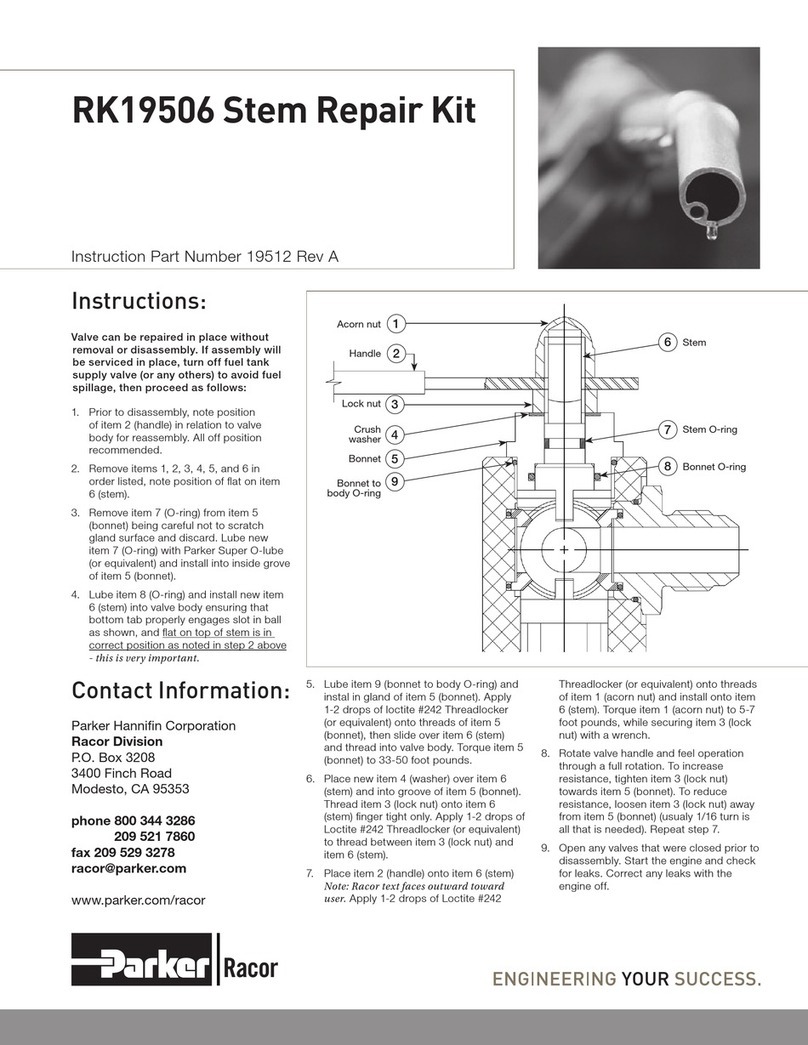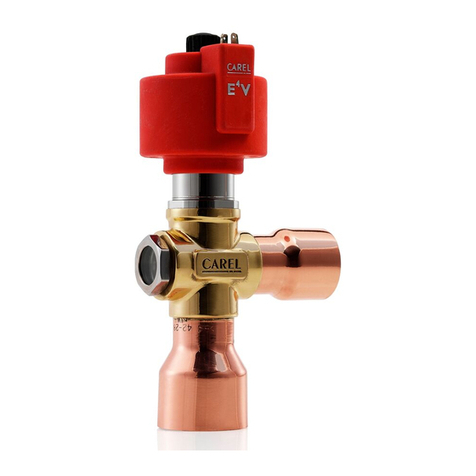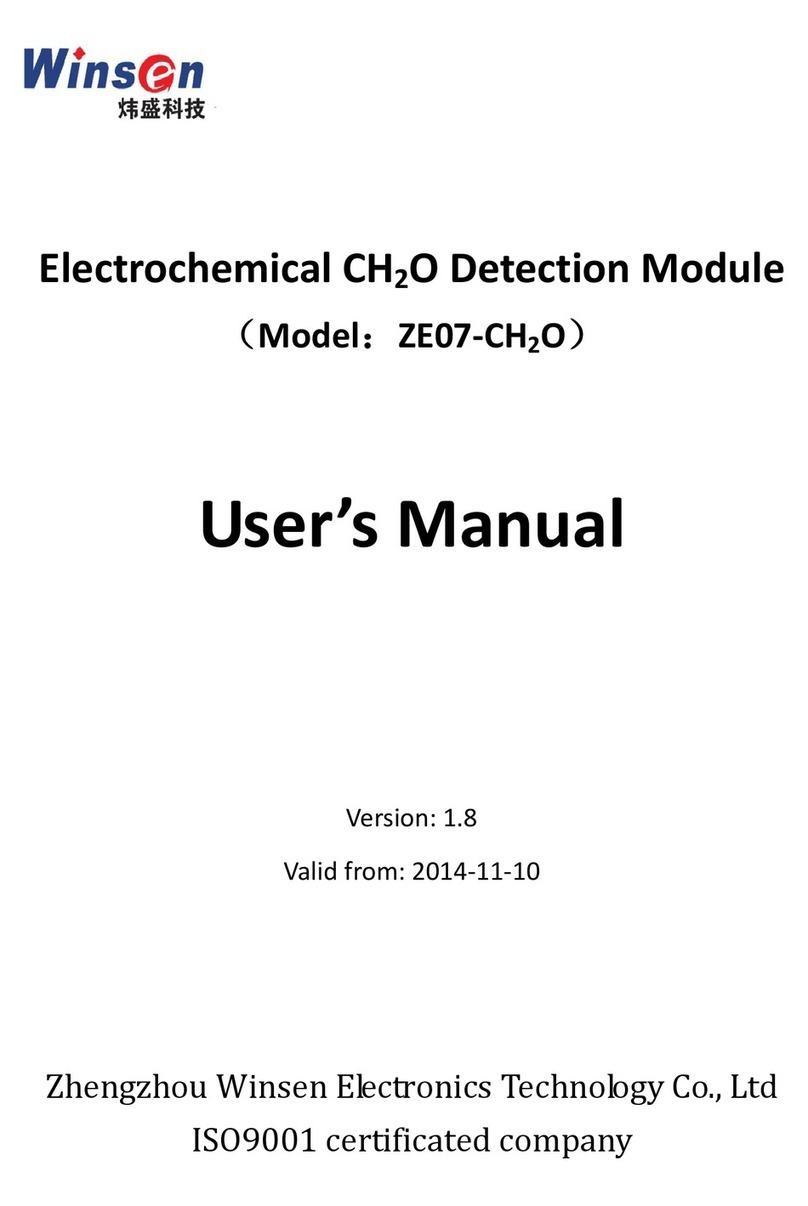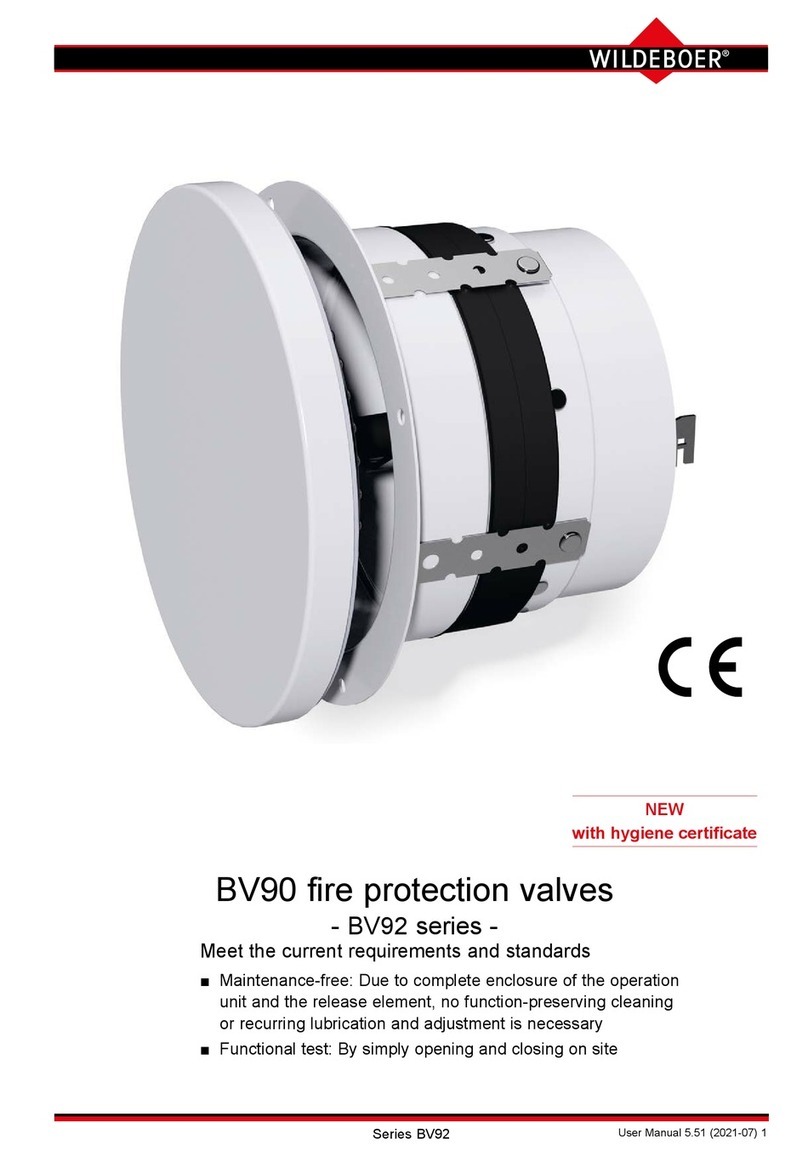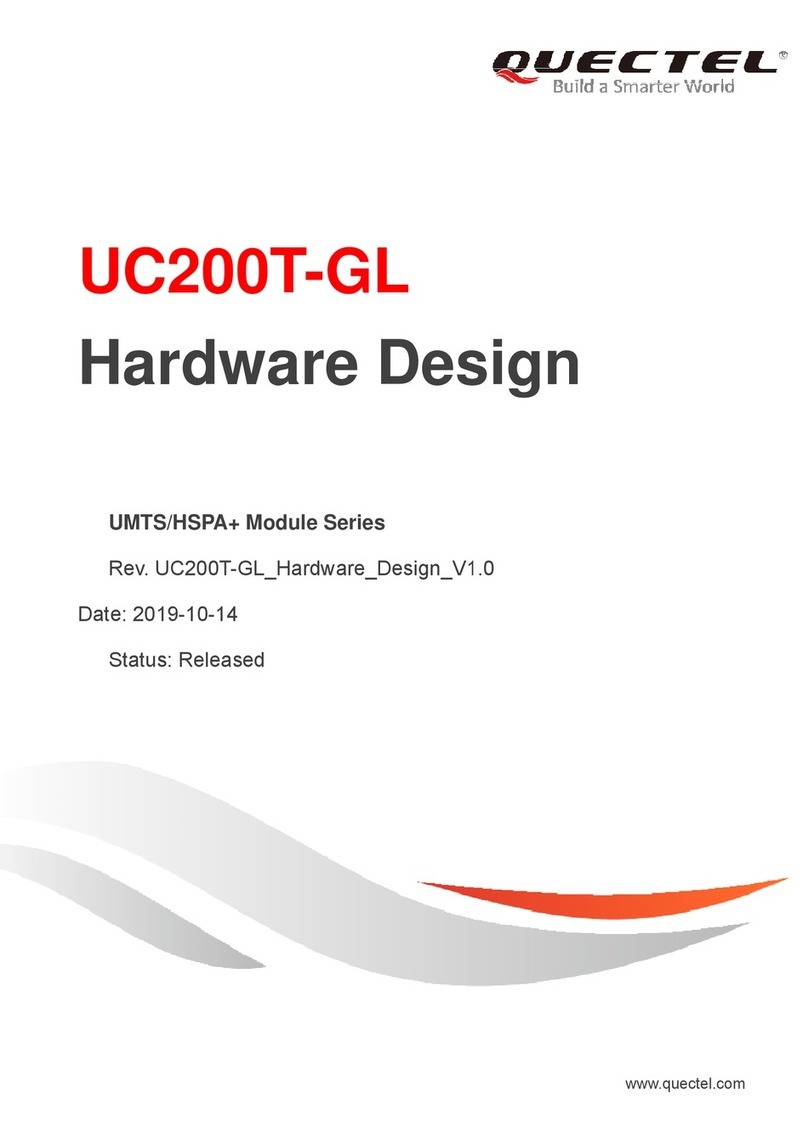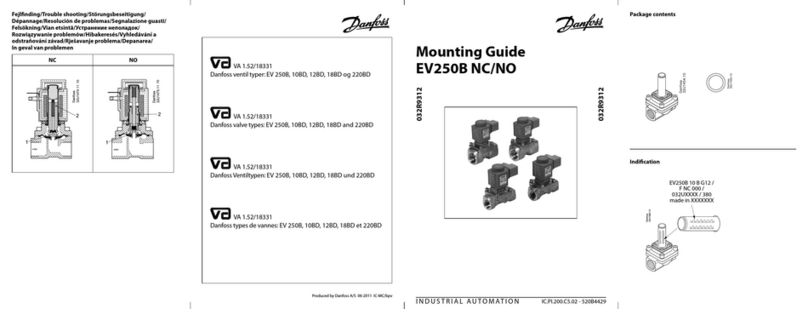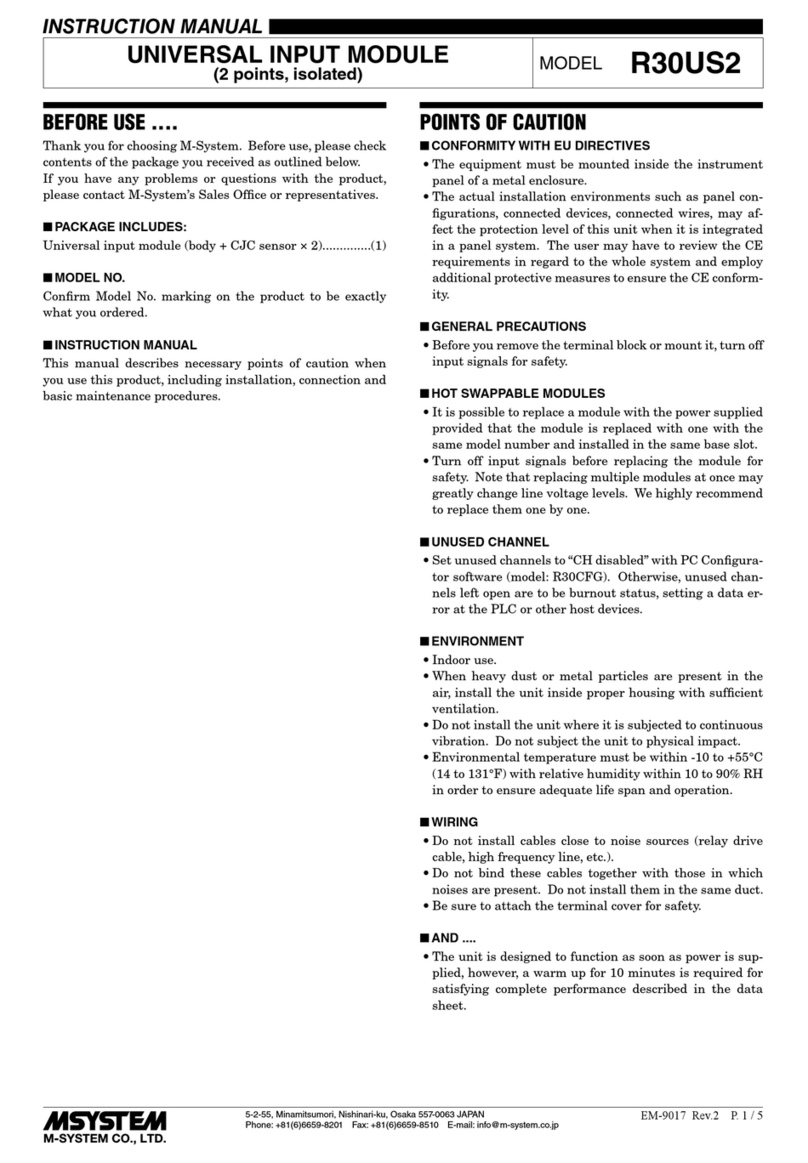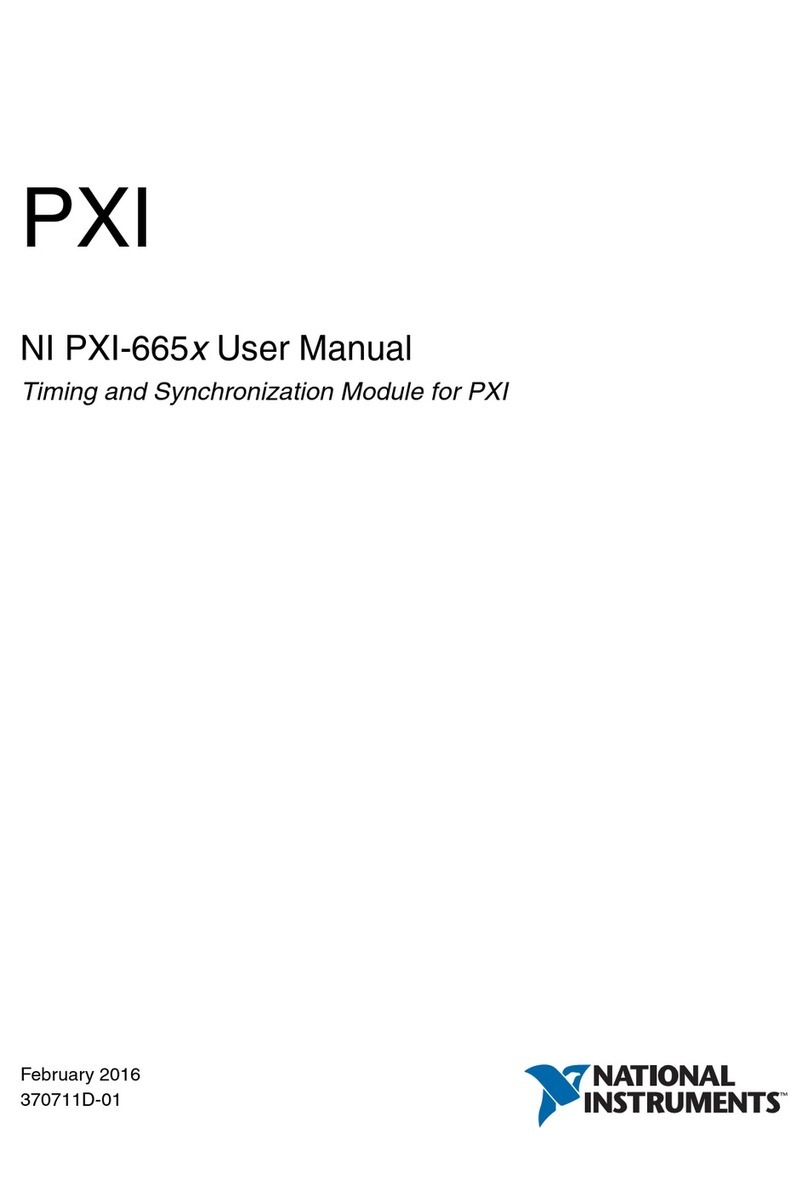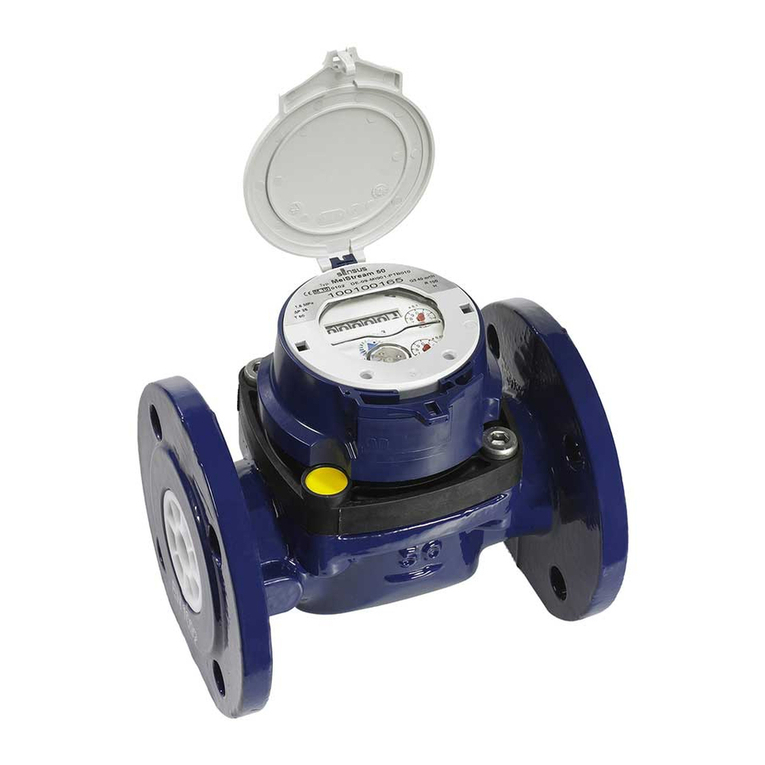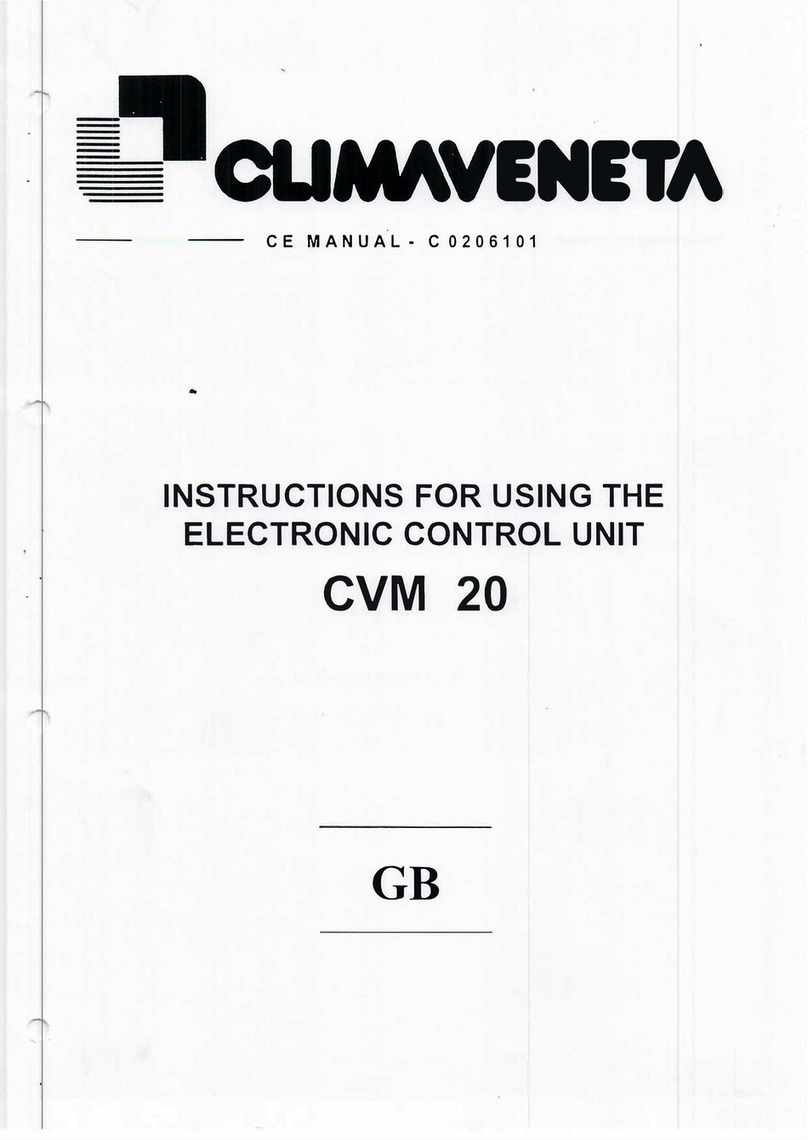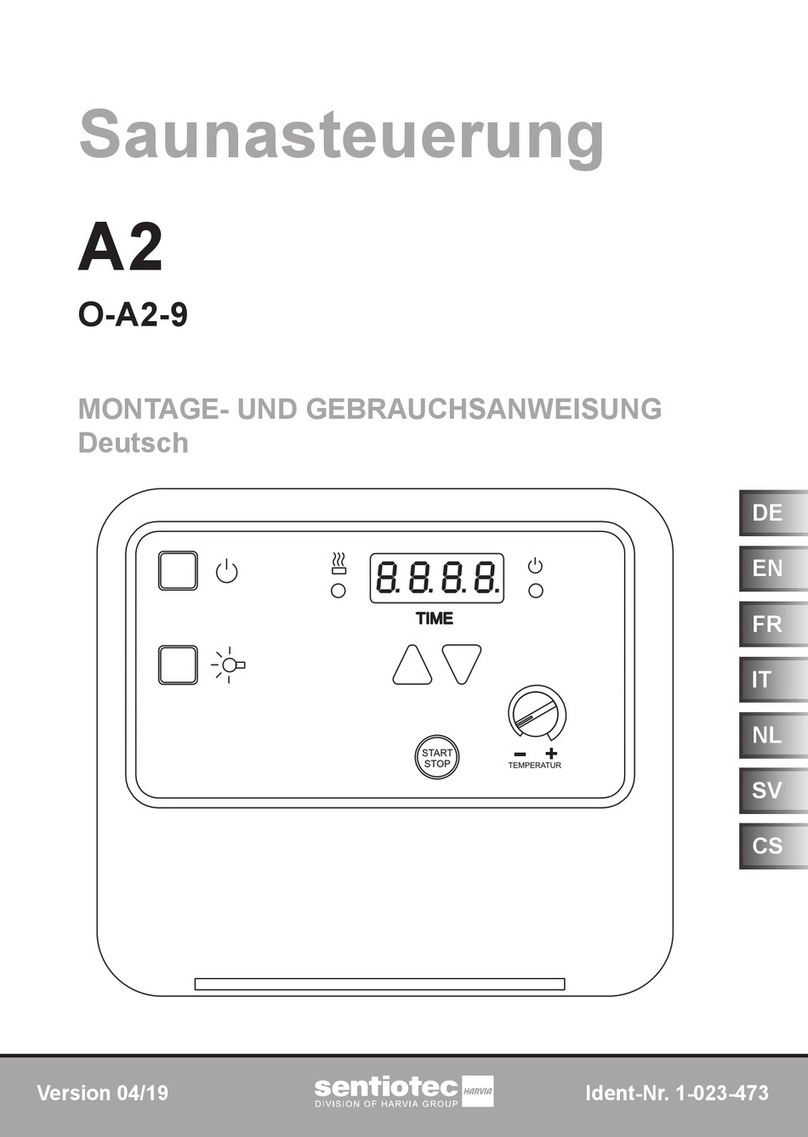AUMA SG 12.1 User manual

Control
Parallel
→Profibus DP
Modbus
Part-turn actuators
SG 05.1 –SG 12.1/SGR 05.1 –SGR 12.1
Control unit: electronic (MWG)
with actuator controls
AUMATIC AC 01.2 Non-Intrusive
Assembly, operation, commissioningOperation instructions

Read operation instructions first.
●Observe safety instructions.
●These operation instructions are part of the product.
●Preserve operation instructions during product life.
●Pass on instructions to any subsequent user or owner of the product.
Purpose of the document:
This document contains information for installation, commissioning, operation and maintenance staff.It is intended
to support device installation and commissioning.
Reference documents:
●Manual (Operation and setting) AUMATIC AC 01.2 Profibus DP
●Manual (Device integration Fieldbus) AUMATIC AC 01.2 Profibus DP
Reference documents can be downloaded from the Internet (www.auma.com) or ordered directly from AUMA
(refer to <Addresses>).
Table of contents Page
51. Safety instructions................................................................................................................. 51.1. Basic information on safety 51.2. Range of application 61.3. Applications in Ex zone 22 (option) 61.4. Warnings and notes 71.5. References and symbols
82. Identification........................................................................................................................... 82.1. Name plate 92.2. Short description
103. Transport, storage and packaging........................................................................................ 103.1. Transport 103.2. Storage 103.3. Packaging
114. Assembly................................................................................................................................ 114.1. Mounting position 114.2. Ball handle: fit to handwheel 114.3. Part-turn actuator to valve: mount 124.3.1 Coupling 134.4. Mounting positions of local controls 134.4.1 Mounting positions: modify
155. Electrical connection............................................................................................................. 155.1. Basic information 175.2. Connection with AUMA plug/socket connector 175.2.1 Terminal compartment: open 185.2.2 Cable connection 195.2.3 Terminal compartment: close 195.2.4 Bus terminal compartment: open 205.2.5 Bus cables: connect 225.2.6 Bus terminal compartment: close 225.3. Accessories for electrical connection 225.3.1 Controls mounted to wall bracket
2
SG 05.1 –SG 12.1/SGR 05.1 –SGR 12.1 Control unit: electronic (MWG)
Table of contents AC 01.2 Non-Intrusive Profibus DP

235.3.2 Parking frame 245.3.3 Protection cover 245.3.4 Double sealed intermediate frame
256. Operation................................................................................................................................ 256.1. Manual operation 256.1.1 Manual operation: engage 256.1.2 Manual operation: disengage 256.2. Motor operation 256.2.1 Local actuator operation 266.2.2 Actuator operation from remote 276.3. Menu navigation via push buttons (for settings and indications) 276.3.1 Menu layout and navigation 286.4. User level, password 296.4.1 Password entry 296.4.2 Password change 306.5. Language in the display 306.5.1 Change language
327. Indications.............................................................................................................................. 327.1. Indications during commissioning 327.2. Indications in the display 337.2.1 Feedback indications from actuator and valve 367.2.2 Status indications according to AUMA classification 377.2.3 Status indications according to NAMUR recommendation 387.3. Mechanical position indicator/running indication 397.4. Indication lights
408. Signals..................................................................................................................................... 408.1. Signals via fieldbus 408.2. Status signals via output contacts (digital outputs) 408.2.1 Assignment of outputs 408.2.2 Encoding of outputs 408.3. Analogue signals
429. Commissioning (basic settings)........................................................................................... 429.1. End stops in part-turn actuator 429.1.1 End stop CLOSED: set 439.1.2 End stop OPEN: set 439.2. Swing angle 449.2.1 Swing angle: modify 459.3. Type of seating: set 469.4. Torque switching: set 479.5. Limit switching: set 499.6. Bus address (slave address): set 509.7. Test run 509.7.1 Direction of rotation: check 519.7.2 Limit switching: check 519.8. Switch compartment: open 519.9. Mechanical position indicator: set 529.10. Switch compartment: close 529.11. Operating time: set
3
SG 05.1 –SG 12.1/SGR 05.1 –SGR 12.1 Control unit: electronic (MWG)
AC 01.2 Non-Intrusive Profibus DP Table of contents

5410. Corrective action.................................................................................................................... 5410.1. Faults during commissioning 5410.2. Fault indications and warning indications 5710.3. Fuses 5710.3.1 Fuses within the actuator controls 5910.3.2 Motor protection (thermal monitoring)
6011. Servicing and maintenance................................................................................................... 6011.1. Preventive measures for servicing and safe operation 6011.2. Maintenance 6011.3. Disposal and recycling
6112. Technical data......................................................................................................................... 6112.1. Features and functions of actuator 6212.2. Features and functions of actuator controls 6512.3. Profibus DP interface 6712.4. Service conditions 6712.5. Accessories 6812.6. Further information
6913. Spare parts............................................................................................................................. 6913.1. Part-turn actuators SG 05.1 –SG 12.1/SGR 05.1 –SGR 12.1 7113.2. Actuator controls AUMATIC AC 01.2 with AUMA plug/socket connector (SD bus)
7314. Certificates.............................................................................................................................. 7314.1. Declaration of Incorporation and EC Declaration of Conformity
7615. Index........................................................................................................................................
78Addresses...............................................................................................................................
4
SG 05.1 –SG 12.1/SGR 05.1 –SGR 12.1 Control unit: electronic (MWG)
Table of contents AC 01.2 Non-Intrusive Profibus DP

1. Safety instructions
1.1 Basic information on safety
Standards/directives AUMA products are designed and manufactured in compliance with recognised
standards and directives.This is certified in a Declaration of Incorporation and an
EC Declaration of Conformity.
The end user or the contractor must ensure that all legal requirements, directives,
guidelines, national regulations and recommendations with respect to assembly,
electrical connection, commissioning and operation are met at the place of installation.
They include among others applicable configuration guidelines for fieldbus
applications.
Safety instructions/war-
nings All personnel working with this device must be familiar with the safety and warning
instructions in this manual and observe the instructions given. Safety instructions
and warning signs on the device must be observed to avoid personal injury or property
damage.
Qualification of staff Assembly, electrical connection, commissioning, operation, and maintenance must
be carried out exclusively by suitably qualified personnel having been authorised by
the end user or contractor of the plant only.
Prior to working on this product, the staff must have thoroughly read and understood
these instructions and, furthermore, know and observe officially recognised rules
regarding occupational health and safety.
Commissioning Prior to commissioning, it is important to check that all settings meet the requirements
of the application. Incorrect settings might present a danger to the application, e.g.
cause damage to the valve or the installation.The manufacturer will not be held
liable for any consequential damage. Such risk lies entirely with the user.
Operation Prerequisites for safe and smooth operation:
●Correct transport, proper storage, mounting and installation, as well as careful
commissioning.
●Only operate the device if it is in perfect condition while observing these instruc-
tions.
●Immediately report any faults and damage and allow for corrective measures.
●Observe recognised rules for occupational health and safety.
●Observe the national regulations.
●During operation, thehousing warmsup andsurfacetemperatures> 60 °Cmay
occur.To prevent possible burns, we recommend checking the surface tempe-
rature using an appropriate thermometer and wearing protective gloves, if re-
quired, prior to working on the device.
Protective measures The end user or the contractor are responsible for implementing required protective
measures on site, such as enclosures, barriers, or personal protective equipment
for the staff.
Maintenance To ensure safe device operation, the maintenance instructions included in this manual
must be observed.
Any device modification requires prior consent of the manufacturer.
1.2 Range of application
AUMA part-turn actuators are designed for the operation of industrial valves, e.g.
butterfly valves and ball valves.
Other applications require explicit (written) confirmation by the manufacturer.
The following applications are not permitted, e.g.:
●Industrial trucks according to EN ISO 3691
●Lifting appliances according to EN 14502
5
SG 05.1 –SG 12.1/SGR 05.1 –SGR 12.1 Control unit: electronic (MWG)
AC 01.2 Non-Intrusive Profibus DP Safety instructions

●Passenger lifts according to DIN 15306 and 15309
●Service lifts according to EN 81-1/A1
●Escalators
●Continuous duty
●Buried service
●Permanent submersion (observe enclosure protection)
●Potentially explosive areas, with the exception of zone 22
●Radiation exposed areas in nuclear power plants
No liability can be assumed for inappropriate or unintended use.
Observance of these operation instructions is considered as part of the device's
designated use.
Information These operation instructions are only valid for the "clockwise closing" standard
version, i.e. driven shaft turns clockwise to close the valve.
1.3 Applications in Ex zone 22 (option)
Actuators of the indicated series basically meet the requirements for applications in
dust hazardous locations of ZONE 22 in compliance with the ATEX directive 94/9/EC.
The actuators are designed to meet enclosure protection IP 67 or IP 68 and fulfil the
requirements of EN 50281-1-1:1998 section 6 - Electrical apparatus for use in
presence of combustible dust, requirements for category 3 electrical equipment -
protected by enclosures.
To comply with all requirements of EN 50281-1-1:1998, it is imperative that the
following points are observed:
●Incompliance withthe ATEX directive94/9/EC,the actuators mustbeequipped
with an additional identification –II3D IP6X T150 °C.
●The maximum surface temperature of the actuators, based on an ambient
temperature of +40 °C in accordance with EN 50281-1-1 section 10.4, is +150
°C.In accordance with section 10.4, an increased dust deposit on the equipment
was not considered for the determination of the maximum surface temperature.
●The correct connection of the thermoswitches or the PTC thermistors as well
as fulfilling the requirements of the duty type and the technical data are prere-
quisites for compliance with the maximum surface temperature of devices.
●The connection plug may only be plugged in or pulled out when device is dis-
connected from the mains.
●The cable glands used also have to meet the requirements of category II3 D
and must at least comply with enclosure protection IP 67.
●The actuators must be connected by means of an external ground connection
(accessory part) to the potential compensation or integrated into an earthed
piping system.
●As a general rule, the requirements of EN 50281-1-1 must be respected in dust
hazardous locations.During commissioning, service, and maintenance, special
care as well as qualified and trained personnel are required for the safe opera-
tion of actuators.
1.4 Warnings and notes
The following warnings draw special attention to safety-relevant procedures in these
operation instructions, each marked by the appropriate signal word (DANGER,
WARNING, CAUTION, NOTICE).
Indicates an imminently hazardous situation with a high level of risk. Failure
to observe this warning could result in death or serious injury.
Indicates a potentially hazardous situation with a medium level of risk.Failure
to observe this warning could result in death or serious injury.
6
SG 05.1 –SG 12.1/SGR 05.1 –SGR 12.1 Control unit: electronic (MWG)
Safety instructions AC 01.2 Non-Intrusive Profibus DP

Indicates a potentially hazardous situation with a low level of risk. Failure to
observe this warning may result in minor or moderate injury.May also be used
with property damage.
Potentially hazardous situation. Failure to observe this warning may result in
property damage. Is not used for personal injury.
Arrangement and typographic structure of the warnings
Type of hazard and respective source!
Potential consequence(s) in case of non-observance (option)
→Measures to avoid the danger
→Further measure(s)
Safety alert symbol warns of a potential personal injury hazard.
The signal word (here: DANGER) indicates the level of hazard.
1.5 References and symbols
The following references and symbols are used in these instructions:
Information The term Information preceding the text indicates important notes and information.
Symbol for CLOSED (valve closed)
Symbol for OPEN (valve open)
Important information before the next step.This symbol indicates what is required
for the next step or what has to be prepared or observed.
Via the menu to parameter
Describes the path within the menu to the parameter. By using the push buttons of
the local controls you may quickly find the desired parameter in the display.
< > Reference to other sections
Terms in brackets shown above refer to other sections of the document which provide
further information on this topic.These terms are either listed in the index, a heading
or in the table of contents and may quickly be found.
7
SG 05.1 –SG 12.1/SGR 05.1 –SGR 12.1 Control unit: electronic (MWG)
AC 01.2 Non-Intrusive Profibus DP Safety instructions

2. Identification
2.1 Name plate
Each device component (actuator, controls, motor) is equipped with a name plate.
Figure 1: Arrangement of name plates
[1] Actuator name plate
[2] Controls name plate
[3] Motor name plate
[4] Additional plate, e.g. KKS plate (Power Plant Classification System)
Data for identification Figure 2: Actuator name plate
[1] Type and size of actuator
[2] Commission number
Figure 3: Controls name plate
[1] Type and size of the controls
[2] Commission number
[3] Wiring diagram
[4] Control
Type and size These instructions apply to the following devices:
Part-turn actuators for open-close duty: SG 05.1, 07.1, 10.1, 12.1
Part-turn actuators for modulating duty: SGR05.1, 07.1, 10.1, 12.1
AC 01.2 = actuator controls AUMATIC
8
SG 05.1 –SG 12.1/SGR 05.1 –SGR 12.1 Control unit: electronic (MWG)
Identification AC 01.2 Non-Intrusive Profibus DP

Commission number An order-specific commission number is assigned to each device.This commission
number can be used to directly download the wiring diagram, inspection records and
further information regarding the device from the Internet: http://www.auma.com.
Wiring diagram The 9th position in the TPA wiring diagram: Position transmitter (actuator)
Control unit: electromechanical:
0= without position transmitter
A, B, J, K, L, N = potentiometer
C, D, E, G, H, M = RWG (electronic position transmitter)
Control unit: electronic:
I= MWG (magnetic limit and torque transmitter)
Control Profibus DP = Control via Profibus DP interface.
Profibus DP-V1 = Control via Profibus DP-V1 interface.
Profibus DP-V2 = Control via Profibus DP-V2 interface.
Profibus DP/24V DC = Control via Profibus DP interface and parallel interface at
24 V DC.
2.2 Short description
Part-turn actuator Definition in compliance with EN ISO 5211:
A part-turn actuator is an actuator which transmits a torque to the valve for less than
one full revolution.It need not be capable of withstanding thrust.
AUMA part-turn actuators are driven by an electric motor. A handwheel is provided
for manual operation.Switching off in end positions may be either by limit or torque
seating. Controls are required to operate or process the actuator signals.
Actuator controls TheAUMATIC actuatorcontrols are usedto operate AUMA actuatorsandare supplied
ready for use.The controls may be mounted directly to the actuator or separately
on a wall bracket.
The functions of the AUMATIC controls include standard valve control in OPEN -
CLOSE duty, positioning, process control, logging of operating data, diagnostic
functions right through control via fieldbus.
Local controls/AUMA
ToolSuite Operation, setting, and display can be performed directly at the controls or
alternatively from REMOTE via a fieldbus interface.
When set to local control, it is possible to
●operate the actuator via the local controls (push buttons and display) and perform
settings (contents of these instructions).
●readin orout dataormodify andsave settings viathe AUMAToolSuite software
(option), using a computer (laptop or PC).The connection between computer
and AUMATIC is wireless via Bluetooth interface (not included in these instruc-
tions).
Intrusive - Non-Intrusive ●Intrusive version (control unit: electromechanical):
Limit and torque setting is performed via switches in the actuator.
●Non-Intrusive version (control unit: electronic):
Limit and torque setting is performed via the controls, actuator and controls
housings do not have to be opened.For this purpose, the actuator is equipped
with an MWG (magnetic limit and torque transmitter), also supplying analogue
torque feedback signals/torque indication and analogue position feedback si-
gnals/position indication.
9
SG 05.1 –SG 12.1/SGR 05.1 –SGR 12.1 Control unit: electronic (MWG)
AC 01.2 Non-Intrusive Profibus DP Identification

3. Transport, storage and packaging
3.1 Transport
For transport to place of installation, use sturdy packaging.
Hovering load!
Risk of death or serious injury.
→Do NOT stand below hovering load.
→Attach ropes or hooks for the purpose of lifting by hoist only to housing and NOT
to handwheel.
→Actuators mounted on valves: Attach ropes or hooks for the purpose of lifting
by hoist to valve and NOT to actuator.
→Actuatorsmounted to gearboxes:Attachropes orhooksforthe purpose oflifting
by hoist only to the gearbox using eyebolts and NOT to the actuator.
→Actuators mounted to controls: Attach ropes or hooks for the purpose of lifting
by hoist only to the actuator and NOT to the controls.
3.2 Storage
Danger of corrosion due to inappropriate storage!
→Store in a well-ventilated, dry room.
→Protect against floor dampness by storage on a shelf or on a wooden pallet.
→Cover to protect against dust and dirt.
→Apply suitable corrosion protection agent to uncoated surfaces.
Damage on display caused by temperatures below permissible level!
→The AUMATIC actuator controls must NOT be stored below –30 °C.
Long-term storage If the device must be stored for a long period (more than 6 months) the following
points must be observed in addition:
1. Prior to storage:
Protect uncoated surfaces, in particular the output drive parts and mounting
surface, with long-term corrosion protection agent.
2. At an interval of approx.6 months:
Check for corrosion.If first signs of corrosion show, apply new corrosion protec-
tion.
3.3 Packaging
Our products are protected by special packaging for transport when leaving the
factory.The packaging consists of environmentally friendly materials which can easily
be separated and recycled.We use the following packaging materials: wood,
cardboard, paper, and PE foil. For the disposal of the packaging material, we
recommend recycling and collection centres.
10
SG 05.1 –SG 12.1/SGR 05.1 –SGR 12.1 Control unit: electronic (MWG)
Transport, storage and packaging AC 01.2 Non-Intrusive Profibus DP

4. Assembly
4.1 Mounting position
AUMA actuators and actuator controls can be operated without restriction in any
mounting position.
4.2 Ball handle: fit to handwheel
To avoid damage during transport, the ball handle is fitted at the rear of the
handwheel.
Prior to commissioning, mount the ball handle into correct position:
1. Remove cap nut [1] and pull out ball handle [2].
2. Insert ball handle [2] in correct position and fasten with cap nut [1].
3. After ball handle fitting, remove label from handwheel.
4.3 Part-turn actuator to valve: mount
Danger of corrosion due to damage to paint finish and condensation!
→Touch up damage to paint finish after work on the device.
→After mounting, connect the device immediately to electrical mains to ensure
that heater prevents condensation.
11
SG 05.1 –SG 12.1/SGR 05.1 –SGR 12.1 Control unit: electronic (MWG)
AC 01.2 Non-Intrusive Profibus DP Assembly

4.3.1 Coupling
Figure 6: Coupling fitting dimensions
[1] Coupling
[2] Valve shaft
[3] Grub screw
[4] Screw
Table 1: Coupling fitting dimensions
Z max [mm]Y max [mm]X max [mm]Type, size - mounting flange 60–9SG/SGR 05.1-F05 60–9SG/SGR 05.1-F07 60–9SG/SGR 07.1-F07 75–24SG/SGR 07.1-F10 77915SG/SGR 10.1-F10 97–32SG/SGR 10.1-F12 100–25SG/SGR 12.1-F12 120–45SG/SGR 12.1-F14 132–57SG/SGR 12.1-F16
1. Use handwheel to drive actuator to mechanical end stop.
Information: Assemble valve and actuator in the same end position.
- With butterfly valves: recommended mounting position is end position
CLOSED.
- With ball valves: recommended mounting position is end position OPEN.
2. Thoroughly degrease mounting faces of the mounting flange.
3. Apply a small quantity of grease to the valve shaft [2].
4. Place coupling [1] onto valve shaft [2] and secure against axial slipping by using
a grub screw, a circlip or a screw.Thereby, ensure that dimensions X,Y or Z
are observed (refer to figure and table <Coupling fitting dimensions>).
5. Apply non-acidic grease at splines of coupling.
6. Fit actuator.
Information: Ensure that the spigot (if provided) fits uniformly in the recess
and that the flanges are in complete contact.
7. If flange bores do not match thread:
7.1 Slightly rotate handwheel until bores line up.
7.2 If required, shift actuator position by one tooth on the coupling.
12
SG 05.1 –SG 12.1/SGR 05.1 –SGR 12.1 Control unit: electronic (MWG)
Assembly AC 01.2 Non-Intrusive Profibus DP

8. Fasten actuator with screws [4].
Information:We recommend glueing the screws using sealing material to avoid
contact corrosion.
→Fasten screws [4] crosswise with a torque according to table:
Table 2: Tightening torques for screws
Tightening torqueTA[Nm]Screws
Thread Strength class 8.8
11M6 25M8 51M10 87M12
4.4 Mounting positions of local controls
The mounting position of the local controls is selected according to the order.If, after
mounting the actuator to the valve or the gearbox on site, the local controls are in
an unfavourable position, the mounting position can be changed at a later date.Four
mounting positions are possible.
Figure 7: Mounting positions A-2 and B-2
Figure 8: Mounting positions C-2 and D-2
4.4.1 Mounting positions: modify
Hazardous voltage!
Risk of electric shock.
→Disconnect device from the mains before opening.
13
SG 05.1 –SG 12.1/SGR 05.1 –SGR 12.1 Control unit: electronic (MWG)
AC 01.2 Non-Intrusive Profibus DP Assembly

Electrostatic discharge ESD!
Risk of damage to electronic components.
→Earth both operators and devices.
1. Loosen screws and remove the local controls.
2. Check whether O-ring is in good condition, correctly insert O-ring.
3. Turn local controls into new position and re-place.
Cable damage due to twisting or pinching!
Risk of functional failures.
→Turn local controls by a maximum of 180°.
→Carefully assemble local controls to avoid pinching the cables.
4. Fasten screws evenly crosswise.
14
SG 05.1 –SG 12.1/SGR 05.1 –SGR 12.1 Control unit: electronic (MWG)
Assembly AC 01.2 Non-Intrusive Profibus DP

5. Electrical connection
5.1 Basic information
Danger due to incorrect electrical connection
Failure to observe this warning can result in death, serious injury, or property damage.
→The electrical connection must be carried out exclusively by suitably qualified
personnel.
→Prior to connection, observe basic information contained in this chapter.
→After connection but prior to applying the voltage, observe the <Commissioning>
and <Test run> chapters.
Wiring diagram/terminal
plan The pertaining wiring diagram/terminal plan (in German and English language) is
attached to the device in a weather-proof bag, together with these operation
instructions.Itcan also beobtained fromAUMA(state commissionno.,referto name
plate) or downloaded directly from the Internet (www.auma.com).
Permissible networks
(supply networks) The controls (actuators) are suitable for for use in TN and TT networks with directly
earthed star point and a maximum voltage of 690 V AC.Use in IT networks is
permitted while observing the respective <Protection on site> for for maiximum supply
voltages of 600V AC.
Protection on site For short-circuit protection and for disconnecting the actuator from the mains, fuses
and disconnect switches have to be provided by the customer.
The current values for respective sizing is derived from the current consumption of
themotor (refer to electrical datasheet) plus thecurrent consumptionof the controls.
Table 3: Current consumption controls
Max. current consumptionMains voltage –30 %±10 %Permissible variation of the mains voltage 1,200 mA750 mA100 to 120 V AC 750 mA400 mA208 to 240 V AC 400 mA250 mA380 to 500 V AC 400 mA200 mA515 to 690 V AC
Table 4: Maximum permissible protection
max. protectionRated powerSwitchgear 16 A (gL/gG)up to 1.5 kWReversing contactor A1 16 A (g/R) I²t<1,500A²sup to 1.5 kWThyristor
If controls are mounted separately from actuator (controls on wall bracket):Consider
length and cross section of connecting cable when defining the protection required.
Use appropriate insulation monitors when working in power installations, for example
an insulation monitor measuring the pulse code.
Power supply for the
controls (electronics) In case of external supply of the controls (electronics):The external power supply
must have a reinforced insulation against the mains voltage in accordance with IEC
61010-1 and may only be supplied by a circuit limited to 150 VA in accordance with
IEC 61010-1.
Safety standards All externally connected devices shall comply with the relevant safety standards.
Cable installation in ac-
cordance with EMC Signal and bus cables are susceptible to interference.
Motor cables are interference sources.
●Lay cables being susceptible to interference or sources of interference at the
highest possible distance from each other.
15
SG 05.1 –SG 12.1/SGR 05.1 –SGR 12.1 Control unit: electronic (MWG)
AC 01.2 Non-Intrusive Profibus DP Electrical connection

●The interference immunity of signal and bus cables increases if the cables are
laid close to the earth potential.
●If possible, avoid laying long cables and make sure that they are installed in
areas being subject to low interference.
●Avoid long parallel paths with cables being either susceptible to interference or
interference sources.
●For the connection of remote position transmitters, screened cables must be
used.
Type of current, mains
voltage and mains fre-
quency
Type of current, mains voltage and mains frequency must match the data on the
motor name plate.
Figure 9: Motor name plate (example)
[1] Type of current
[2] Mains voltage
[3] Mains frequency (for 3-ph and 1-ph AC motors)
Connecting cables ●For device insulation, appropriate (voltage-proof) cables must be used.Specify
cables for the highest occurring rated voltage.
●Use connecting cable with appropriate minimum rated temperature.
●For connecting cables exposed to UV radiation (outdoor installation), use UV
resistant cables.
Bus cables Only cables complying with IEC 61158 or IEC 61784, cable type A, may be used for
Profibus DP wiring.
Cable recommendation:
Impedance: 135 to 165 Ohm, at a measurement frequency bet-
ween 3 and 20 MHz
Cable capacity: < 30 pF per metre
Wire diameter: > 0.64 mm
Wire cross section: > 0.34 mm², corresponds to AWG 22
Loop resistance: < 110 Ohm per km
Screening: CU shielding braid or shielding braid and shielding
foil
Prior to installation, please note:
●Connect maximum 32 devices to one segment.
●If more devices are to be connected:
- Allot devices to different segments.
- Connect segments using repeaters.
●Respect a distance of minimum 20 cm between the bus cable and other cables.
●If possible, bus cables should be laid in a separate, conductive, and earthed
cable tray.
●Make sure to avoid potential differences between the individual devices on the
bus (perform an equipotential earth bonding).
16
SG 05.1 –SG 12.1/SGR 05.1 –SGR 12.1 Control unit: electronic (MWG)
Electrical connection AC 01.2 Non-Intrusive Profibus DP

1,500500187.5
≥93.75
Baud rate [kbit/s] 2004001,0001,200Maximum segment length [m]
5.2 Connection with AUMA plug/socket connector
Cross sections AUMA plug/socket connector:
●Power terminals (U1, V1, W1, U2, V2, W2): max. 6 mm² flexible/10 mm² solid
●PE connection : max. 6 mm² flexible/10 mm² solid
●Control contacts (1 to 50): max.2.5 mm²
5.2.1 Terminal compartment: open
Information The bus connection can be separately accessed from the mains connection (refer
to <Bus terminal compartment: open>).
Figure 10: Mains connection AUMA plug/socket connector SD bus
[1] Connection housing
[2] Screws for connection housing
[3] O-ring
[4] Screws for socket carrier
[5] Socket carrier
[6] Cable entry for mains
[7] Blanking plug
[8] Cable gland (not included in delivery)
Information Bus operation is not interrupted when removing the connection housing [1].
Hazardous voltage!
Risk of electric shock.
→Disconnect device from the mains before opening.
1. Loosen screws [2] and remove connection housing [1].
2. Loosen screws [4] and remove socket carrier [5] from connection housing [1].
17
SG 05.1 –SG 12.1/SGR 05.1 –SGR 12.1 Control unit: electronic (MWG)
AC 01.2 Non-Intrusive Profibus DP Electrical connection

3. Insert cable glands [8] suitable for connecting cables.
➥The enclosure protection IP...stated on the name plate is only ensured if suitable
cable glands are used.Example: Name plate shows enclosure protection IP
68.
4. Seal unused cable entries [6] with suitable blanking plugs [7].
5. Insert the cables into the cable glands [8].
5.2.2 Cable connection
✔Observe permissible cross sections.
1. Remove cable sheathing.
2. Strip wires.
3. For flexible cables: Use end sleeves according to DIN 46228.
4. Connect cables according to order-related wiring diagram.
In case of a fault: Hazardous voltage while protective earth conductor is NOT
connected!
Risk of electric shock.
→Connect all protective earth conductors.
→Connect PE connection to external protective earth conductor of connecting
cables.
→Start running the device only after having connected the protective earth con-
ductor.
5. Tighten PE conductors firmly to PE connection using ring lugs (flexible cables)
or loops (rigid cables).
Figure 12: PE connection
[1] Socket carrier
[2] Screw
[3] Washer
[4] Lock washer
[5] Protective earth with ring lugs/loops
[6] PE connection, symbol:
Danger of corrosion: Damage due to condensation!
→After mounting, commission the device immediately to ensure that heater mini-
mises condensation.
18
SG 05.1 –SG 12.1/SGR 05.1 –SGR 12.1 Control unit: electronic (MWG)
Electrical connection AC 01.2 Non-Intrusive Profibus DP

Information Some actuators are equipped with an additional motor heater.The motor heater
minimises condensation within the motor and improves the start-up behaviour for
extremely low temperatures.
5.2.3 Terminal compartment: close
Figure 13: AUMA plug/socket connector SD bus
[1] Connection housing
[2] Screws for connection housing
[3] O-ring
[4] Screws for socket carrier
[5] Socket carrier
[6] Cable entry for mains
[7] Blanking plug
[8] Cable gland (not included in delivery)
Short-circuit due to pinching of cables!
Risk of electric shock and functional failures.
→Carefully fit socket carrier to avoid pinching the cables.
1. Insert the socket carrier [5] into the cover [1] and fasten with screws [4].
2. Clean sealing faces of connection housing [1] and housing.
3. Check whether O-ring [3] is in good condition, replace if damaged.
4. Apply a thin film of non-acidic grease (e.g.petroleum jelly) to the O-ring and
insert it correctly.
5. Fit connection housing [1] and fasten screws [2] evenly crosswise.
6. Fasten cable glands [8] applying the specified torque to ensure the required
enclosure protection.
5.2.4 Bus terminal compartment: open
The AUMA plug/socket connector (SD bus) is equipped with a connection board for
connecting the bus cables.When removing the cover [1] the connection board is
easily accessible.
19
SG 05.1 –SG 12.1/SGR 05.1 –SGR 12.1 Control unit: electronic (MWG)
AC 01.2 Non-Intrusive Profibus DP Electrical connection

Figure 14: AUMA plug/socket connector SD bus
[1] Cover (bus terminal compartment)
[2] Screws for cover
[3] O-ring
[4] Cable entries for bus cables
[5] Blanking plug
Hazardous voltage!
Risk of electric shock.
→Disconnect device from the mains before opening.
Electrostatic discharge ESD!
Risk of damage to electronic components.
→Earth both operators and devices.
1. Loosen screws [2] and remove cover [1].
2. Insert cable glands suitable for bus cables.
➥The enclosure protection IP…stated on the name plate is only ensured if suita-
ble cable glands are used.
➥Example: Name plate shows enclosure protection IP 68.
3. Seal unused cable entries [4] with suitable blanking plugs [5].
4. Insert the wires into the cable glands.
5.2.5 Bus cables: connect
Information This description applies to the connection via RS-485 copper cables. Separate in-
structions are available for connection via FO (fibre optic) cables.
Variants A label with the AUMA article number on the connection board identifies the installed
variant.
20
SG 05.1 –SG 12.1/SGR 05.1 –SGR 12.1 Control unit: electronic (MWG)
Electrical connection AC 01.2 Non-Intrusive Profibus DP
This manual suits for next models
3
Table of contents
Other AUMA Control Unit manuals
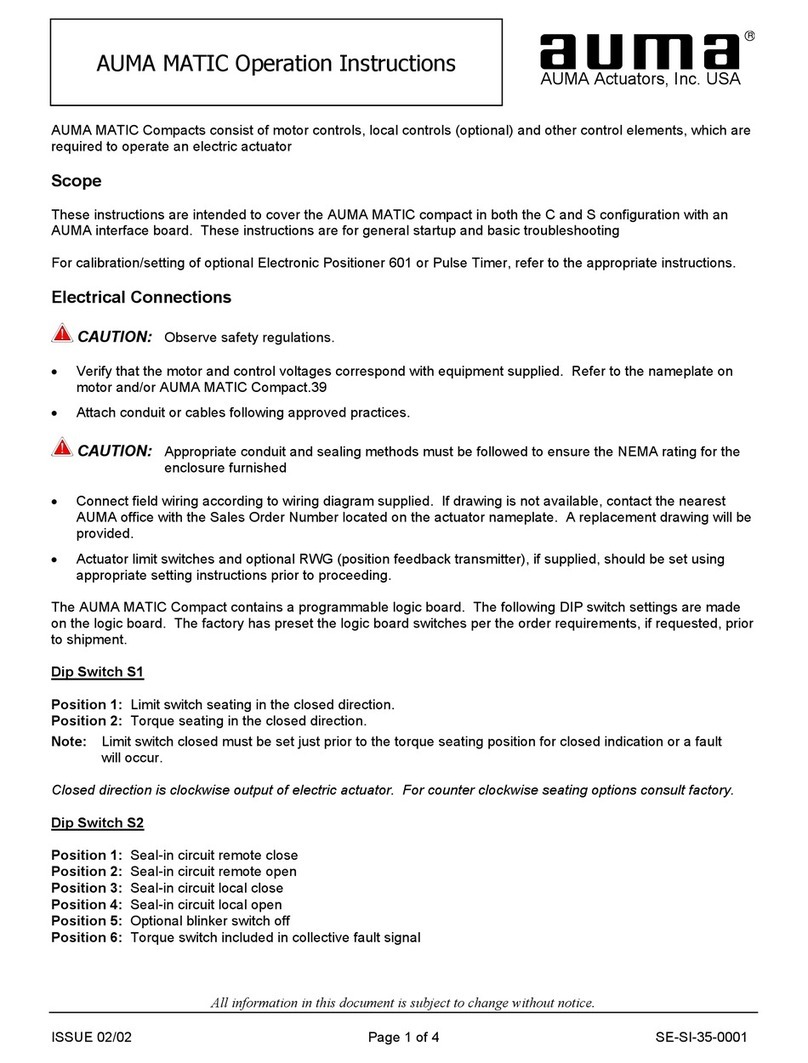
AUMA
AUMA Matic User manual
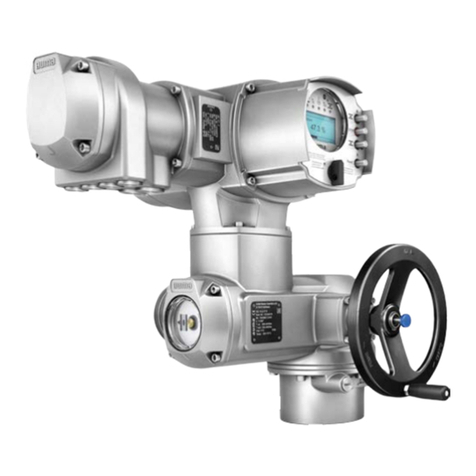
AUMA
AUMA SQ 05.2 User manual

AUMA
AUMA Aumatic AC 01.1 User manual

AUMA
AUMA AMExB 01.1 User manual

AUMA
AUMA AUMATIC AC 01.2 User manual
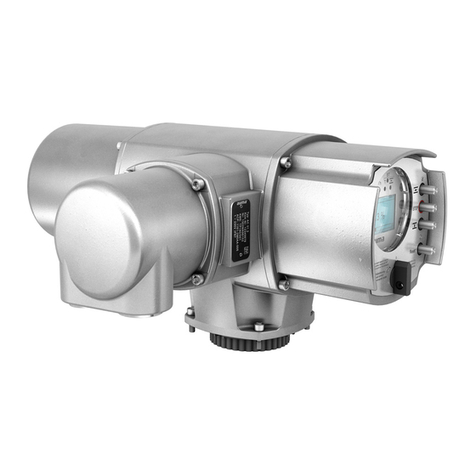
AUMA
AUMA Aumatic AC 01.1 User manual
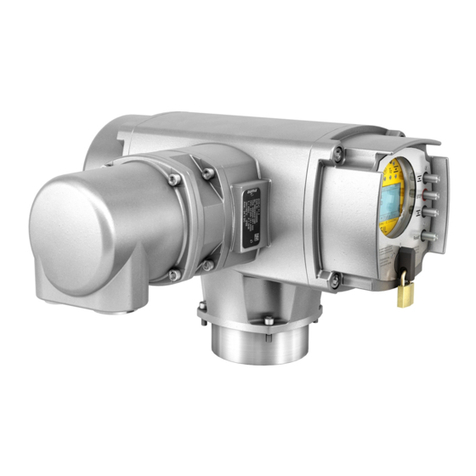
AUMA
AUMA AC 01.2 User manual

AUMA
AUMA Aumatic AC 01.1 Manual
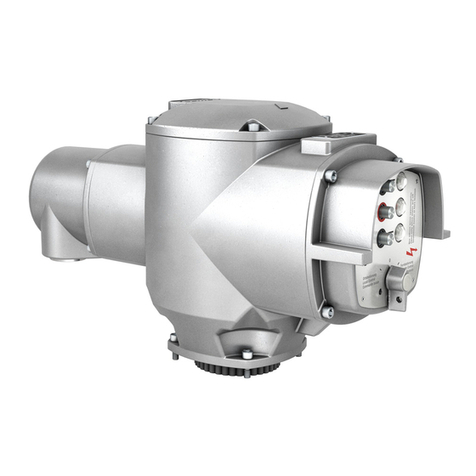
AUMA
AUMA AM 01.1 User manual

AUMA
AUMA AC 01.2 User manual
